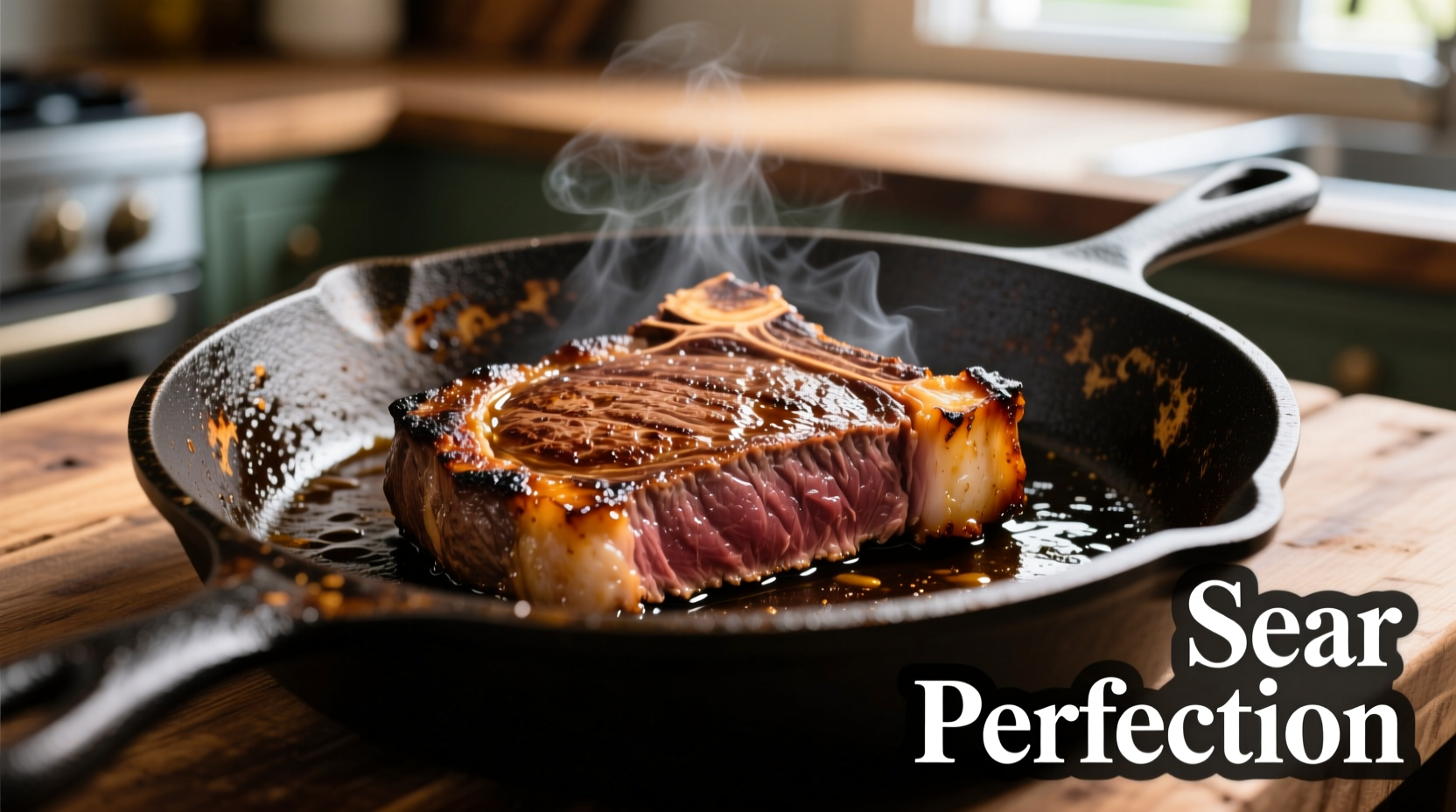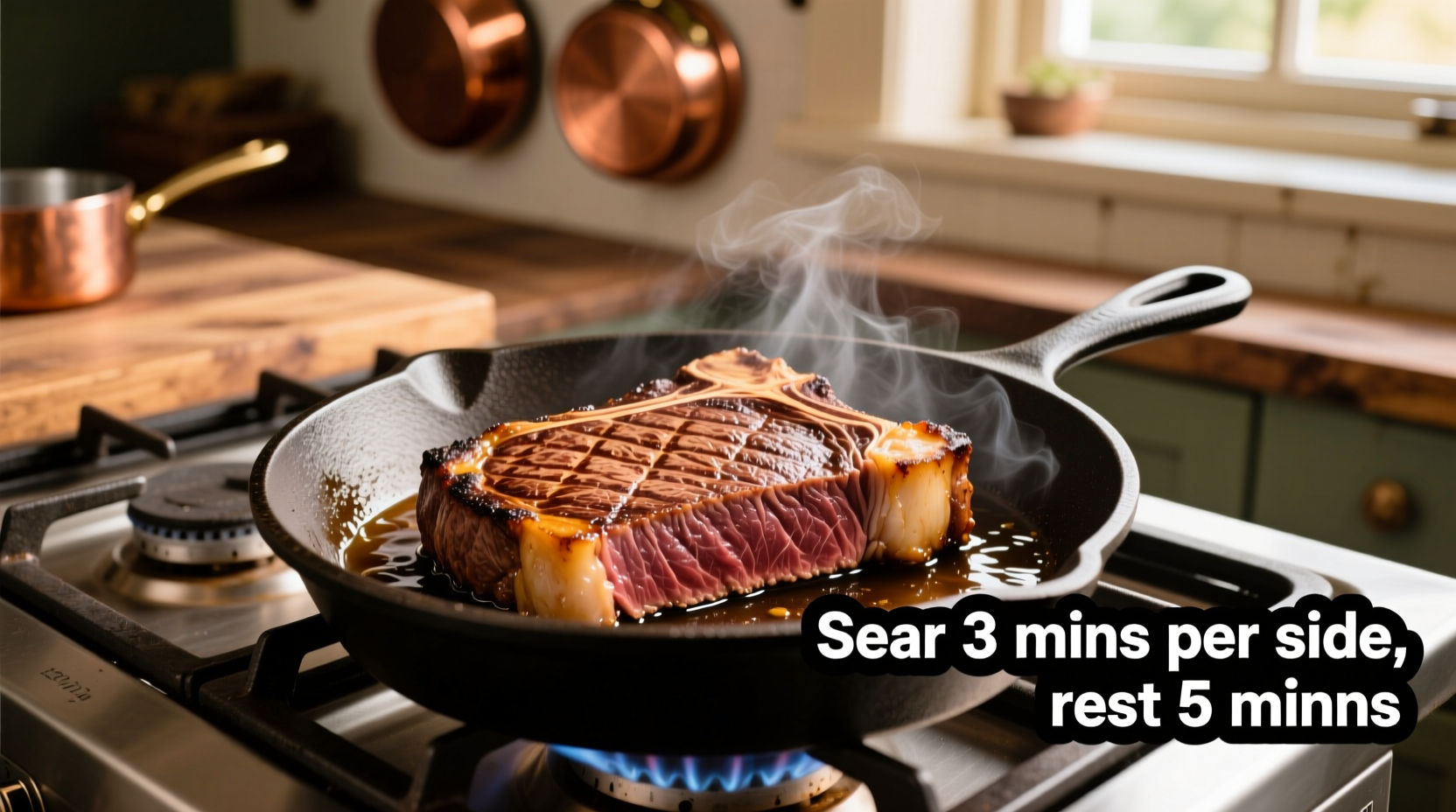The fastest way to cook a perfect sirloin tip steak on the stove: Pat steak dry, season generously, heat cast-iron skillet to smoking point, sear 3-4 minutes per side for medium-rare (adjust for thickness), rest 5-10 minutes before slicing against the grain. Internal temperature should reach 130-135°F for medium-rare.
Master Stovetop Sirloin Tip Steak: Your Foolproof Guide
Nothing beats a perfectly cooked steak when you're craving a restaurant-quality meal at home. Sirloin tip steak offers excellent flavor at an affordable price, but many home cooks struggle to achieve that perfect sear and juicy interior without a grill. The good news? Your stovetop can deliver exceptional results when you follow these professional techniques.
As someone who's cooked thousands of steaks in both professional kitchens and home settings, I've refined this method to eliminate guesswork. Whether you're cooking for a special occasion or a weeknight dinner, this guide will help you consistently produce tender, flavorful sirloin tip steak that rivals what you'd get at a high-end steakhouse.
Why Sirloin Tip Steak Deserves Your Attention
Sirloin tip (also called round steak or beef knuckle) comes from the hip area of the cow, making it leaner than ribeye or strip steak but still packed with robust beef flavor. This cut benefits tremendously from proper stovetop cooking because:
- It's more affordable than premium cuts while still delivering great taste
- The relatively thin profile (typically 1-1.5 inches thick) cooks perfectly on the stove
- When cooked correctly, it offers surprising tenderness despite being a lean cut
- It's versatile enough for weeknight meals but elegant for special occasions
| Doneness Level | Internal Temperature | Visual & Texture Cues | Approx. Cooking Time* |
|---|---|---|---|
| Rare | 120-125°F | Cool red center, very soft | 2-3 min per side |
| Medium-rare | 130-135°F | Warm red center, tender | 3-4 min per side |
| Medium | 140-145°F | Warm pink center, slightly firm | 4-5 min per side |
| Medium-well | 150-155°F | Small amount of pink, firm | 5-6 min per side |
| Well-done | 160°F+ | Little to no pink, very firm | 6-7+ min per side |
*For 1-inch thick steak. Adjust based on thickness. Source: USDA Food Safety and Inspection Service Cooking Meat Made Safe
Your Essential Preparation Checklist
Proper preparation makes the difference between a good steak and a great one. Don't skip these critical steps:
Steak Selection and Handling
- Thickness matters: Aim for steaks at least 1 inch thick (1.25-1.5 inches is ideal) for better control during cooking
- Temperature is key: Remove steak from refrigerator 30-60 minutes before cooking to take the chill off
- Dry thoroughly: Pat steak completely dry with paper towels—moisture is the enemy of a good sear
- Season generously: Use coarse salt (like kosher) and freshly ground black pepper at minimum 15 minutes before cooking
Equipment You'll Need
- Heavy-bottomed skillet (cast iron preferred, but stainless steel works)
- Tongs (not a fork, which pierces the meat)
- Instant-read thermometer (critical for perfect results)
- Wire rack for resting (or warm plate)
- Aluminum foil for tenting
The Perfect Stovetop Cooking Process
Follow this step-by-step method for consistently excellent results:
Step 1: Pan Preparation (The Foundation of Success)
Place your skillet over medium-high heat for 5-7 minutes until properly preheated. You'll know it's ready when a few drops of water dance and evaporate immediately upon contact. Add 1-2 tablespoons of high smoke-point oil (avocado, grapeseed, or canola—not olive oil).
Step 2: The Critical Searing Phase
Place the steak in the hot pan away from you to avoid oil splatter. You should hear an immediate, vigorous sizzle. Do not move the steak for the first 2-3 minutes to allow a proper crust to form. If the steak sticks initially, it's not ready to flip—wait until it releases naturally.
Step 3: Flipping and Finishing
After the initial sear, flip the steak using tongs. For medium-rare, cook 3-4 minutes on the second side. For thicker cuts or more doneness, you may need to reduce heat slightly and cook longer. During the last minute, add butter, garlic, and herbs to the pan and tilt to baste the steak.
Step 4: The Non-Negotiable Resting Period
Transfer steak to a wire rack or warm plate, tent loosely with foil, and rest for 5-10 minutes (longer for thicker cuts). This allows juices to redistribute—cutting too soon releases precious moisture onto your cutting board.

Common Mistakes That Ruin Stovetop Steak (And How to Avoid Them)
Even experienced home cooks make these critical errors:
- Using a cold steak: Starting with a cold steak leads to uneven cooking and poor sear. Always bring to near room temperature first.
- Overcrowding the pan: Cook one steak at a time in a properly sized pan. Multiple steaks lower the temperature too much.
- Peeking too often: Resist the urge to lift and check. Let the steak develop that essential crust.
- Skipping the thermometer: Guessing doneness leads to overcooked steak. An instant-read thermometer is essential.
- Cutting too soon: Resting isn't optional—it's when your steak becomes truly juicy.
When Stovetop Cooking Works Best (And When It Doesn't)
Sirloin tip steak is particularly well-suited to stovetop cooking, but there are important context boundaries to understand:
- Ideal for: Steaks 1-1.5 inches thick, weeknight cooking, smaller quantities (1-2 steaks), when outdoor grilling isn't possible
- Less ideal for: Extremely thick cuts (over 2 inches), cooking multiple steaks simultaneously, when you want pronounced grill marks
- Alternative method: For very thick steaks, consider starting on the stove then finishing in a 400°F oven to achieve proper internal temperature without overcooking the exterior
Serving Suggestions for Maximum Enjoyment
Slice your rested sirloin tip steak against the grain into 1/4-1/2 inch strips for maximum tenderness. Pair with simple sides that won't compete with the steak's flavor:
- Garlic mashed potatoes
- Roasted asparagus or green beans
- Simple arugula salad with lemon vinaigrette
- Compound butter (mix softened butter with herbs and garlic)
For wine pairings, medium-bodied reds like Merlot or Malbec complement sirloin tip steak beautifully without overwhelming its flavor.
Troubleshooting Your Stovetop Steak Results
Encountering issues? Here's how to fix common problems:
- Steak is tough: You likely overcooked it or didn't slice against the grain. Try reducing cooking time by 30-60 seconds per side next time.
- No good sear: Pan wasn't hot enough, steak wasn't dry enough, or you moved it too soon. Ensure proper preheating and thorough drying.
- Burning exterior but raw interior: Heat was too high. Use medium-high rather than high heat for more even cooking.
- Excessive smoke: Normal with high-heat searing. Turn on exhaust fan, open windows, and consider using an air purifier during cooking.











 浙公网安备
33010002000092号
浙公网安备
33010002000092号 浙B2-20120091-4
浙B2-20120091-4